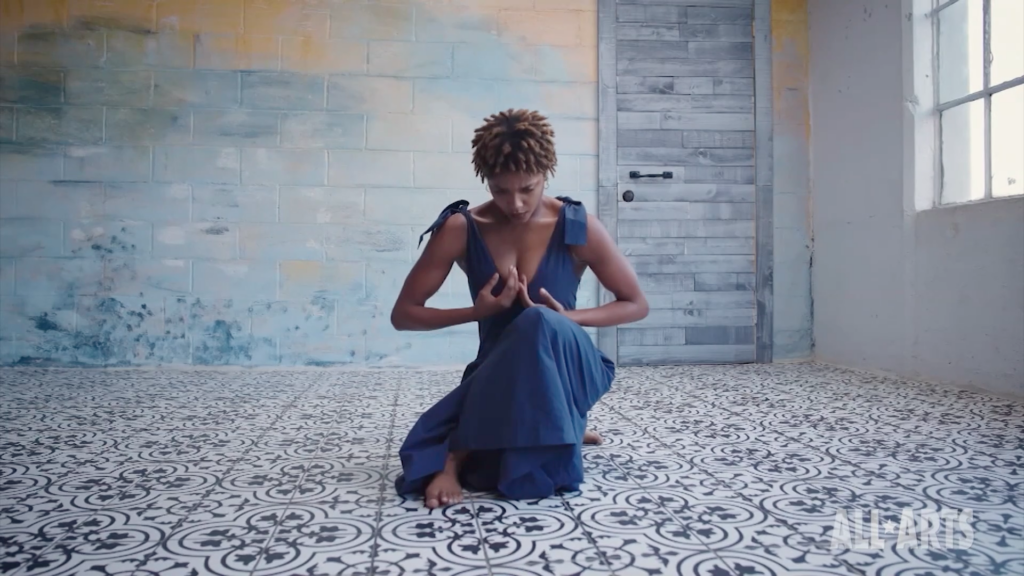On Hegel, Nadine Gordimer, and Kyle Abraham

Gianna Theodore in Kyle Abraham’s Our Indigo: If We Were a Love Song.
Over the past year I have read and reread Angelica Nuzzo’s book Approaching Hegel’s Logic, Obliquely, in which Nuzzo guides the reader through Hegel’s Science of Logic. Nuzzo presents the question of how we are to think about history as it unfolds amid chaos and relentless crises. How, in other words, are we to find a means to think outside the incessant whirr of our times? The answer she provides is one I find wholly satisfactory: it is through the work of Hegel that we are best able to think about and think through the current state of the world, precisely because his work is itself an exploration of thinking—particularly Science of Logic, as Nuzzo eloquently explains:
Hegel’s dialectic-speculative logic is the only one that aims at—and succeeds in—accounting for the dynamic of real processes: natural, psychological but also social, political, and historical processes. It is a logic that attempts to think of change and transformation in their dynamic flux not by fixating movement in abstract static descriptions but by performing movement itself.
By tracking the movement of the mind, a movement that is incessant and fluid, we are best equipped to study the crises of our time as they occur. In particular, we are best able to examine and analyze the structure of capitalism itself, a structure which is formed by exchange value and is thus a system of infinite repetition and reproduction. A system of infinite plasticity—appropriating everything it comes in contact with. A system, in other words, akin to that of the mind. Hegel does not merely explain how the mind works but enacts its very movement. He places us in the center of its whirr.
—Cynthia Cruz, author of “Charity Balls”
For the past few months, I’ve been reading novels about white women settlers in colonial and post-independent Africa. Many of the protagonists I’ve encountered are coming of age; their journeys are heroes’ journeys, culminating in a coupling that enshrines, perhaps paradoxically, their so-called independence, a process that is almost always set against an independence movement, whether a successful or an ongoing one. In Nadine Gordimer’s The Late Bourgeois World, published in 1966 and set during apartheid, Liz Van Den Sandt is already divorced. Her ex-husband, a militant communist who has disavowed his Boer upbringing, has just drowned himself. She feels no sympathy for him, although she is convinced that his tactics (acting as a rogue bomber, and then as an informant once he was caught) were righteous: “he went after the right things, even if perhaps it was the wrong way,” she tells their son, who is completely undisturbed by the news of his father’s death. “If he failed, well, that’s better than making no attempt.” But Liz herself seems without conviction altogether: having left political life, she has now taken as her part-time lover a man with good taste and no political conscience. Nevertheless, she feels herself distinct from the consumer-driven white women around her, “the good citizens who never had any doubt about where their allegiance lay.” When she is asked by a former black political ally (another sometimes lover) to take a potentially risky action, she can see no reason not to. And yet she hesitates and finds excuses, seeing in her ally’s pleas only what she imagines he projects onto her. I don’t know if I liked or disliked the book. Some parts I found pleasurable, and other parts painful and intolerable. But as a data point, I found its cynical literalism intriguing. “A sympathetic white woman hasn’t got anything to offer,” she muses, “except the footing she keeps in the good old white Reserve of banks and privileges.” In exchange, all she can hope for is the possibility of sex, “this time or next time.”
—Maya Binyam, contributing editor
Recently, I’ve been obsessed with a video recording of a performance I saw last April at the Institute of Contemporary Art in Boston: three works by the choreographer Kyle Abraham, among them the haunting Our Indigo: If We Were a Love Song. Abraham has become well-known for large-scale collaborations with Kendrick Lamar, Beyoncé, and Sufjan Stevens. But Love Song is understated: it’s a curation of solos, duos, and trios set to Nina Simone, each of them a private moment or choreographic journal entry. The dance makes me want to move and groove, while also rooting me to the spot, so arresting is its beauty. In a solo set to Simone’s “Little Girl Blue,” Gianna Theodore coils her way across the space in a sequence of delicate and acrobatic floor work. In a kind of silent break dance, she lays her whole body weight into the ground only to spring back up in time with the music. “Why won’t somebody send a tender blue boy,” Simone sings, as Theodore moves effortlessly between crouching and standing, “to cheer up little girl blue.” In the video, Theodore appears against a shocking yellow-and-white tile wall wearing a simple navy dress. Though the close-up shots elide some of her larger movements, they also draw me close to her private sensations and memories. Watching Theodore’s blue dress trail on the ground, her hands checking the hem as she kneels, I encounter my own sense memories: the silhouette of my grandmother, dancer-thin behind a cloud of cigarette smoke, humming along to Nina Simone. To see Abraham’s work performed by his company, A.I.M., is a particular treat, so fluent the dancers are in his physical language. You can catch them performing Our Indigo: If We Were a Love Song in New York at the Joyce Theater April 4–9.
—Elinor Hitt, reader
Copyright
© The Paris Review
